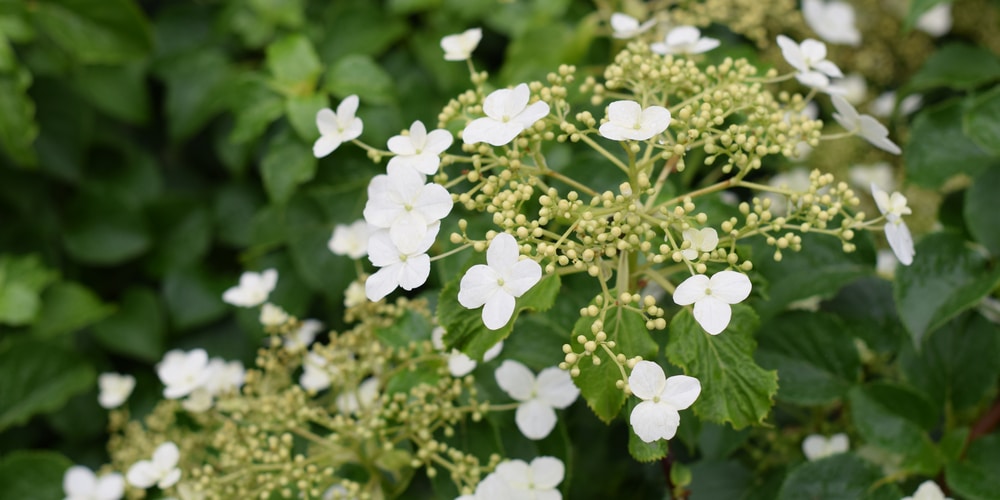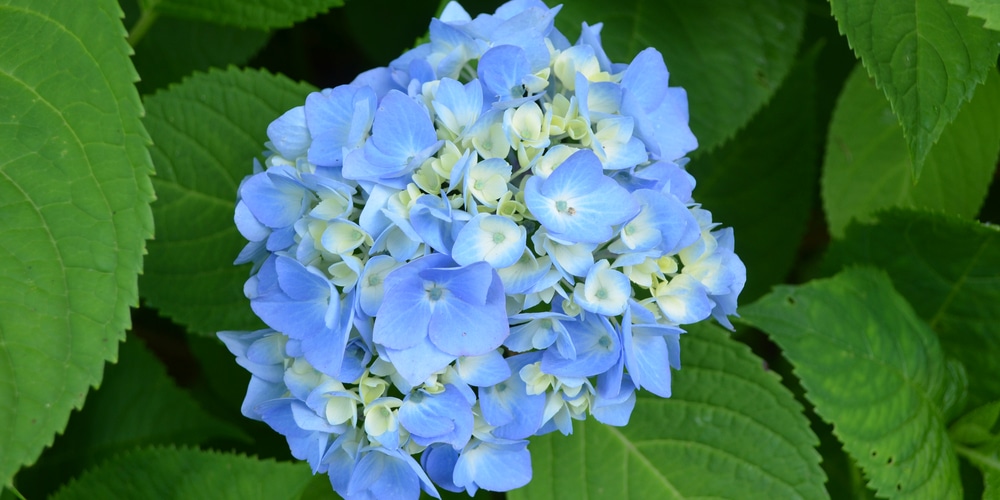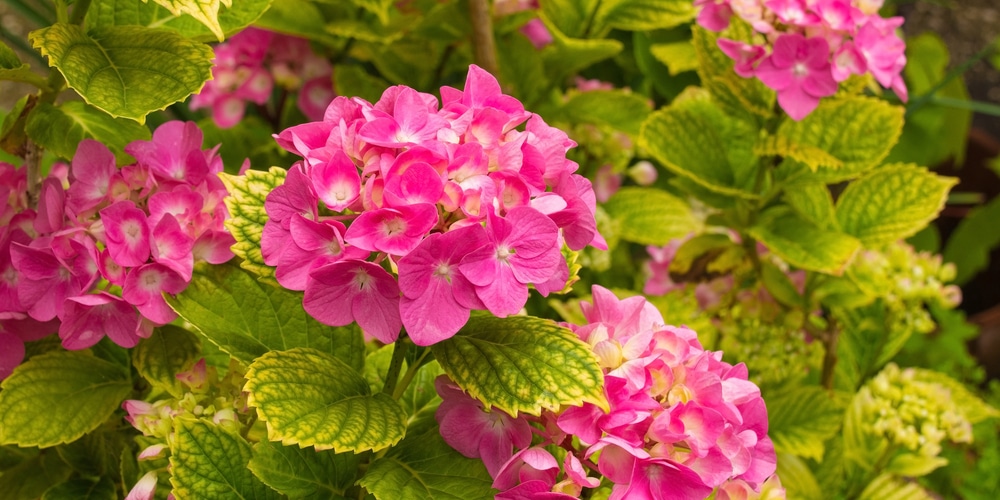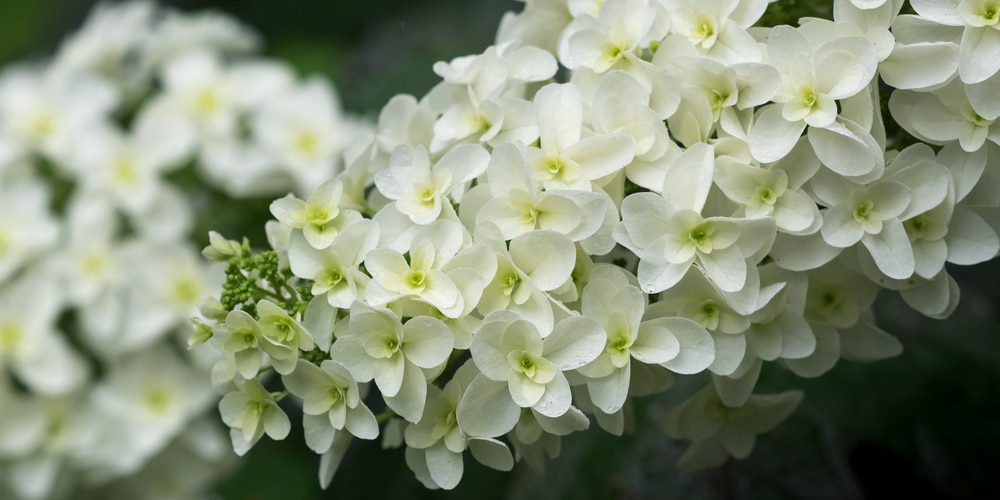With bountiful, ruffled blooms, intricate leaves, and exceptional versatility, hydrangeas are undeniably a beautiful addition to any landscape. There are tons of species and cultivars offering different colors, leaves, growth patterns, and sizes. But can they grow in deep shade?
While most hydrangeas grow best in full sun to partial shade, a handful of these stunning flowering plants thrive in deep shade. If your yard gets little to no sun exposure, that shouldn’t crush your hydrangea-garden dreams. Hydrangeas are as tolerant as they are beautiful.
Best hydrangea for deep shade
Here are hydrangeas that can tolerate full shade:
1. Hydrangea anomala petiolaris

Climbing hydrangeas are the most unusual members of the hydrangea family — they grow and will certainly bloom in deep shade.
Essentially, the hydrangea anomala petiolaris is a slow-growing vine that thrives in full shade. With its aerial rootlets, it clings to shady surfaces, showcasing its magnificent, rich green foliage and fragrant, laser cap-like clusters of white blooms.
Although slow-growing, these shade-tolerant hydrangeas can grow up to 50 feet long if they are offered good support. They don’t have heavy wood, so they won’t harm the surfaces they cling to. Planting hydrangea anomala petiolaris is a sure way to add beauty to any shade façade.
2. Hydrangea petiolaris Miranda
Hydrangea petiolaris Miranda is another climbing variety that will grow happily in shady areas. With its dark green variegated foliage that has yellow to creamy white margins, this vine is sure to add interest in yards with deep shades.
In late spring to early summer, hydrangea petiolaris Miranda will bloom into clusters of fragrant white flowers. Each cluster consists of creamy white to greenish-yellow fertile flowers in the center surrounded by showy white sterile flowers.
Besides the attractive blooms, mature plants have exfoliating, reddish brown bark that adds interest in winter when most plants are dormant.
Hydrangea petiolaris Miranda is more effective when grown against walls or unsightly tree stumps.
3. Hydrangea integrifolia
Hydrangea integrifolia is an elegant, evergreen vine that clings to surfaces, offering year-round interest. Like other climbing hydrangeas, it thrives in shady areas, offering an easy way to beautify your north-facing walls.
The leaves of this vine remain deep green year-round.
Of significance, while hydrangea integrifolia takes a little longer to reach blooming age, it will eventually produce huge rounded flower buds that open to stunning lacy white flowers.
4. Endless Summer Hydrangeas
Endless summer hydrangeas live up to their name, with their massive pink or blue flowers that last summer long. Despite their name, they can grow and bloom in full shade. However, they will grow best when planted in spots that receive partial shade; ideally, direct sunlight in the morning.
One of the exciting things about growing endless summer hydrangeas is that you can customize the color of the blooms. Playing with the soil pH can change the bloom from vivid blue to pale lavender to soft mauve to deep pink.
The stems of endless summer hydrangea varieties also have colorful stems that add to the beauty of your shady lawn.
5. Mophead Hydrangeas (Hydrangea macrophylla)
If you see cut flowers at a store, they are highly likely mop heads. Commonly known as big leaf hydrangeas, mophead hydrangeas are priced for their large blooms and dense foliage. Although most varieties of this clan are sun-lovers, a handful will thrive in light to deep shade.
For those shaded areas, you can’t go wrong with Nikko blue, lime lovebird, glowing embers, felicity, everlasting amethyst, blaumeise, and double down. While these varieties will thrive without morning sun, they will do best with partial shade.
6. Oakleaf hydrangea (Hydrangea quercifolia)
Prized for their large, showy blooms, oakleaf hydrangeas are easily recognized for their large oak leaves. They are hardy for USDA zones 5 through 9 and will grow happily in shade areas.
For the best results in shady areas, it is recommended that you plant native varieties, especially those that bloom into white.
Conclusion
Hydrangeas offer an easy way to add wonderment to any garden. If you have a heavily shaded yard where other plants can hardly grow, these hydrangeas will surely add color and life to those dark spots.


